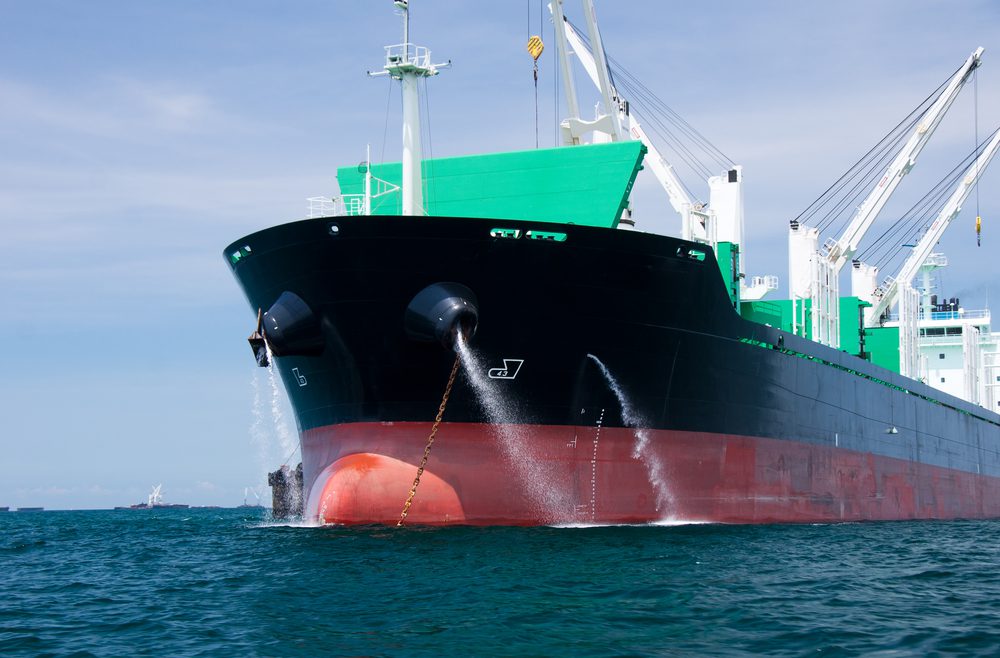Geopolitics, High Bids, and U.S. Pressure Cloud COSCO’s Global Port Ambitions
COSCO Shipping Ports is facing "challenges" with its international investments amid pressures from the U.S. trade war, its managing director said in Hong Kong on Thursday.

By Tappasan Phurisamrit / Shutterstock
![]()
By Julie Ingwersen and Karl Plume – March 1 (Reuters) – Flooding and ice buildup on key rivers in the U.S. Midwest has stalled the movement of barges that supply export terminals at the Gulf of Mexico with grain and soy, barge and grain traders said.
One lock on the Ohio River became impassable last week, halting vessels moving to and from the Mississippi River until as late as March 9, they said.
“It’s a logistical nightmare, with this lock being closed … and the high water at the Gulf, and high water at Cairo, (Illinois). It’s just going to be that way for the next couple of weeks,” one cash grain trader said.
Cash premiums for crops delivered by barge to New Orleans, the country’s busiest grain port have already scaled to their highest point in months, making it difficult to land new export sales in the waning days of the traditional U.S. export season, as cheaper, newly harvested South American crops begin to flood the market.
The transport problems come as the United States and China, the world’s biggest soy importer, are trying to hammer out a trade deal after months of tariffs on billions of dollars worth of each others’ goods.
Any resolution could result in China buying more U.S. agricultural products after being mostly out of the market this year.
But high water levels could complicate any effort to ship goods quickly from the U.S. Gulf.
On some stretches of the Mississippi and Ohio rivers, barge operators have restricted the sizes of their tows and limited navigation to daylight hours only.
“The Mississippi Gulf accounts for 60 percent of our exports. So it impedes our ability to get product to market,” said Mike Steenhoek, executive director of the Iowa-based Soy Transportation Coalition.
The shipping challenges have made it much harder for U.S. corn and soybeans to compete in global markets.
Cash premiums for soybean barges shipped to the Gulf in the near term spiked to a nine-month high this week, while spot corn barge premiums hit 10-month peaks.
“The U.S. isn’t doing themselves any favors; they are definitely high versus Brazil for beans and Argentina for corn,” one export trader said.
Cash prices of both commodities rose this week despite a lack of fresh buying by China.
Beijing last week committed to buy 10 million tonnes of U.S. soybeans in a meeting in Washington, adding to several rounds bouts of goodwill purchases by the world’s largest soy importer.
Flooding is not uncommon in the Midwest spring, but high-water hazards on rivers have begun early this year following ample precipitation over the winter and autumn.
“We are coming off a very wet late summer and fall,” Steenhoek said, adding: “Frankly, it’s something that we are going to be very attentive to as spring approaches.” (Reporting by Julie Ingwersen and Karl Plume in Chicago, editing by G Crosse)
(c) Copyright Thomson Reuters 2019.

Sign up for gCaptain’s newsletter and never miss an update

Subscribe to gCaptain Daily and stay informed with the latest global maritime and offshore news


Stay informed with the latest maritime and offshore news, delivered daily straight to your inbox
Essential news coupled with the finest maritime content sourced from across the globe.
Sign Up